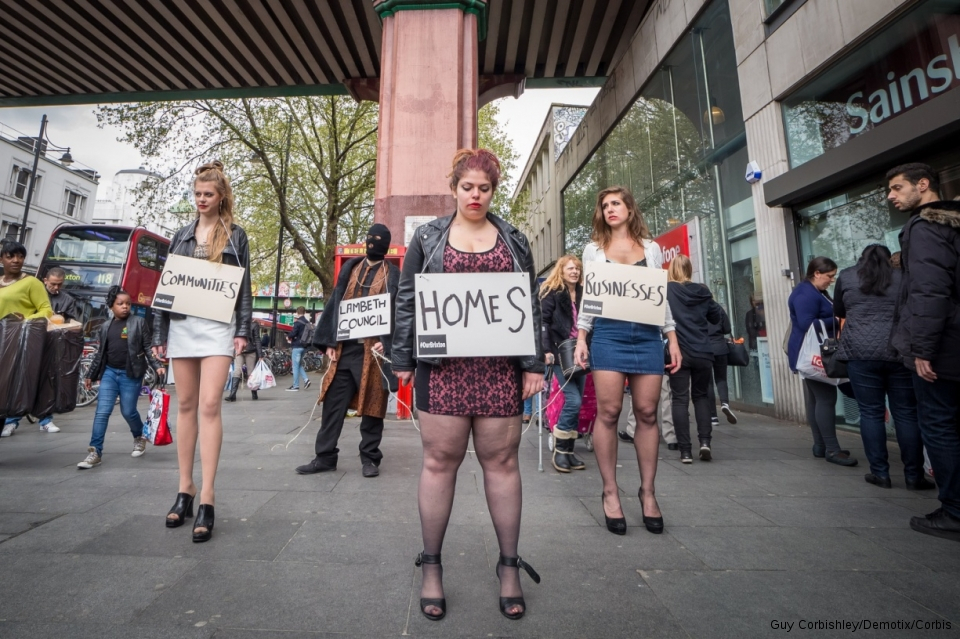London is a city ruled by money. The things that make it special – the markets, pubs, high streets and communities – are becoming unrecognisable. The city is suffering a form of entropy whereby anything distinctive is converted into property value. Can the capital save itself?
London is without question the most popular city for investors,” says Gavin Sung of the international property agents Savills. “There is a trust factor. It has a strong government, a great legal system, the currency is relatively safe. It has a really nice lifestyle, there is the West End, diversity of food, it’s multicultural.” We are in his office in a block in the centre of Singapore and he is explaining why people from that city-state are keen to buy residential property in London.
He’s right – London has all these qualities. It has parks, museums and nice houses. Its arts of hedonism are reaching unprecedented levels: its restaurants get better or at least more ambitious and its bars offer cocktails previously unknown to man (coconut seviche, for example, where, as its makers put it, “coconut gin is swizzled through crushed ice with yuzu, passion fruit and a dark chocolate liqueur, and served long with an accompanying ‘shot’ of tuna seviche with a tamarind ponzu”). In some ways, the city has never been better. It has a buzz. Its population keeps growing and investment keeps pouring in, both signs of its desirability. As its mayor likes to boast: “London is to the billionaire as the jungles of Sumatra are to the orangutans. It is their natural habitat.”
At the same time, to use a commonly heard phrase, the city is eating itself. Most obviously, its provision of housing is failing to keep up with its popularity, with effects on price that breed bizarre reactions at the top end of the market and misery at the bottom. Thousands are being forced to leave London because their local authorities can’t find them homes and people on middle incomes can’t acquire a place where anyone would want to raise a family.
....
....
Most of the time these shrinkages are for the same reason, which is that there is no more profitable use for land than residential development. If a landowner can convert a factory, an artists’ studio building, a pub or library into flats, colossal windfalls can be made. Because London is seen to suffer from a housing shortage, planning policy tends to look favourably on such conversions. Harding says that there has long been pressure to convert the sort of industrial spaces that artists occupy into loft apartments, but “now it is in hyperinflation mode. Owners can knock them down and put up 42-storey towers and make a fortune”. The consequences, says Brearley, are what are in effect “steroidal suburbs” – monocultural developments that, like the worst of postwar housing estates, only serve one function.
According to Vince McCartney of Holborn Studios, “there will be a corridor of steel and glass from King’s Cross to Limehouse” – a distance of about five miles along the Regent’s Canal – as waterside spaces are made into flats. This could include his studios, a centre of photography that Helmut Newton described as the “Abbey Road” of the art. Its buildings, arranged around a sociable courtyard and a slice of towpath, also nourish a community of businesses that sustain between 250 and 300 jobs, all of which could go if the site’s new owner, Galliard Homes, has its way. “The whole thing is greed-driven,” says MacCartney. “It’s time to say enough. How much development can it stand?”
When properties don’t change as a direct result of conversion to housing, as with the Brixton railway arches, they do so through an indirect consequence: the raising of house prices in an area can mean that there is more money to made from eateries and speciality retail, which pushes out the places that serve the communities already there.
....
Industry is the forgotten part of London’s economy, denigrated and overlooked since the years of Margaret Thatcher, assumed to belong to a lost 1970s world of flat caps and powerful trade unions, its premises labelled “brownfield” and therefore considered ripe for redevelopment, the noun “industries” routinely prefixed with “failing”. Yet it still accounts for 11% of the capital’s economy. It provides essential services. “There is a vast diversity of smaller businesses,” says Mark Brearley of the Cass Cities unit at London Metropolitan University, “that is unstoppably, entrepreneurially driven. It is so fascinating to watch the refreshing of industry in London: things that people had written off are reviving and growing.”
It creates employment and of a certain social value. “The jobs that I provide,” says the founder of Dalston Cola, Duncan O’Brien, “don’t require a university education, but they are skilled and provide career progression. We are not call centres. They are jobs with futures. They establish long-term relationships with local communities. But you can’t do that if you are always being pinged around the city, from one place to the next.”
Industry in London is thriving as best it can. It includes niche makers of food and drink, tech industries, skilled clothing manufacture, glass makers, steel fabrication and vehicle repair. Yet the space it is allowed is contracting. In Tottenham, and along the valley of the river Lea, the places where people can make things are giving way to flats and more flats. As Brearley puts it: “There is a shortage of capacity for economic and cultural life; the city is much less able to nurture entrepreneurialism.”
....
